Oak
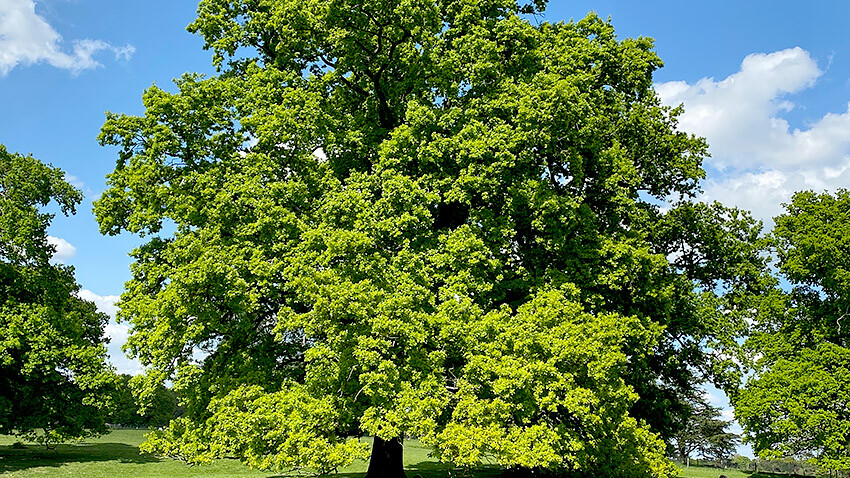
Oak
 At the moment part of the courtyard behind the castle is fenced off to allow for some rather urgent building work to take place in one of the old garages. Originally used for carriages and then repurposed for motor cars by the 5th Earl, it suddenly became rather apparent that the minor cracks and sags of old age had developed into something more serious.
At the moment part of the courtyard behind the castle is fenced off to allow for some rather urgent building work to take place in one of the old garages. Originally used for carriages and then repurposed for motor cars by the 5th Earl, it suddenly became rather apparent that the minor cracks and sags of old age had developed into something more serious.
 This particular garage might once have had more support within the space than it does now. Like everything here space rooms and outbuildings are recycled and adapted. These days we have surveyors and engineers and there was much pursing of lips at the sight of the widening crack which ran above the through the brickwork above the double doors and up towards the roof. It suggested that the long wooden beam and lintel was cracking ( we could see the supporting post was rotten) and that we had come to the point that making do and propping up to extend its life was no longer an option.
This particular garage might once have had more support within the space than it does now. Like everything here space rooms and outbuildings are recycled and adapted. These days we have surveyors and engineers and there was much pursing of lips at the sight of the widening crack which ran above the through the brickwork above the double doors and up towards the roof. It suggested that the long wooden beam and lintel was cracking ( we could see the supporting post was rotten) and that we had come to the point that making do and propping up to extend its life was no longer an option. Thus, each morning, I come down to the Estate office to be greeted with a hive of activity. I tease them that it is in between the cups of tea of course but the gift shop is delighted as they have a temporary team of helpful gentlemen to deal with early morning deliveries.
The bricks are now re-mortared and still wonderfully wonky but that is in keeping with the rest of the courtyard and will be entirely fine as the lintel beneath will once more be strong enough the bear the weight.
The new oak beam has arrived, brought in from where we stored it with the help of the forklift from the farm. I can only imagine the effort it would have taken in the past to heave onto a long-wheeled barrow and pull it round with a horse or two. It is beautiful to look at but sadly, I think it has had to come from France rather than home grown.
Thus, each morning, I come down to the Estate office to be greeted with a hive of activity. I tease them that it is in between the cups of tea of course but the gift shop is delighted as they have a temporary team of helpful gentlemen to deal with early morning deliveries.
The bricks are now re-mortared and still wonderfully wonky but that is in keeping with the rest of the courtyard and will be entirely fine as the lintel beneath will once more be strong enough the bear the weight.
The new oak beam has arrived, brought in from where we stored it with the help of the forklift from the farm. I can only imagine the effort it would have taken in the past to heave onto a long-wheeled barrow and pull it round with a horse or two. It is beautiful to look at but sadly, I think it has had to come from France rather than home grown.
 In the UK over recent years we have not replanted enough oak and as with so many things now, we are dependent on our import trade with other countries. In addition, we have suffered a series of diseases that have attacked our native species from Dutch Elm disease to Ash blight.
In the UK over recent years we have not replanted enough oak and as with so many things now, we are dependent on our import trade with other countries. In addition, we have suffered a series of diseases that have attacked our native species from Dutch Elm disease to Ash blight. All of us are being encouraged to plant a tree to mark the Queen’s Jubilee this year which is a lovely idea although I understand it is now increasingly difficult to get hold of them as a result. Garden centres and nurseries are running out of stock and it is not as easy to import them from Europe as it once was. However, since we live in different areas and landscapes, so hopefully we will all plant different trees.
For example, Thomas Fuller described Norwich, in Norfolk in 1662, as, “either a city in an orchard, or an orchard in a city, so equal are houses and trees blended in it”. Fruit growing was widespread, enjoyed even in tiny plots with trees grown up against the house walls. Perhaps "Work From Home" and less commuter travel will allow us to think again about how to live and what choices to make - it is great to see and meet the office team but perhaps no longer necessary to "live " with them.
All of us are being encouraged to plant a tree to mark the Queen’s Jubilee this year which is a lovely idea although I understand it is now increasingly difficult to get hold of them as a result. Garden centres and nurseries are running out of stock and it is not as easy to import them from Europe as it once was. However, since we live in different areas and landscapes, so hopefully we will all plant different trees.
For example, Thomas Fuller described Norwich, in Norfolk in 1662, as, “either a city in an orchard, or an orchard in a city, so equal are houses and trees blended in it”. Fruit growing was widespread, enjoyed even in tiny plots with trees grown up against the house walls. Perhaps "Work From Home" and less commuter travel will allow us to think again about how to live and what choices to make - it is great to see and meet the office team but perhaps no longer necessary to "live " with them. Planting a tree is such a positive thing to do and something that Geordie and I have done a great deal of in our time here at Highclere from the arboretum, to the Walnut Walk and the cherry trees that now line the wild flower meadow. In one section of my recent book “Seasons at Highclere” I suggest five different fruit trees to plant which provide a good and useful mix and which are relatively easy to manage. Fruit trees also have the advantage of being compact in size and multi-seasonal. You can look forward to blossom, grow a clematis through them for additional colour and enjoy the fruit, either as it comes off the tree or in a myriad of recipes. They are not just for us either but part of a long view for our grandchildren and great grandchildren which lessens our dependency on outside resources for our food, no bad thing in these troubled times.
Planting a tree is such a positive thing to do and something that Geordie and I have done a great deal of in our time here at Highclere from the arboretum, to the Walnut Walk and the cherry trees that now line the wild flower meadow. In one section of my recent book “Seasons at Highclere” I suggest five different fruit trees to plant which provide a good and useful mix and which are relatively easy to manage. Fruit trees also have the advantage of being compact in size and multi-seasonal. You can look forward to blossom, grow a clematis through them for additional colour and enjoy the fruit, either as it comes off the tree or in a myriad of recipes. They are not just for us either but part of a long view for our grandchildren and great grandchildren which lessens our dependency on outside resources for our food, no bad thing in these troubled times.
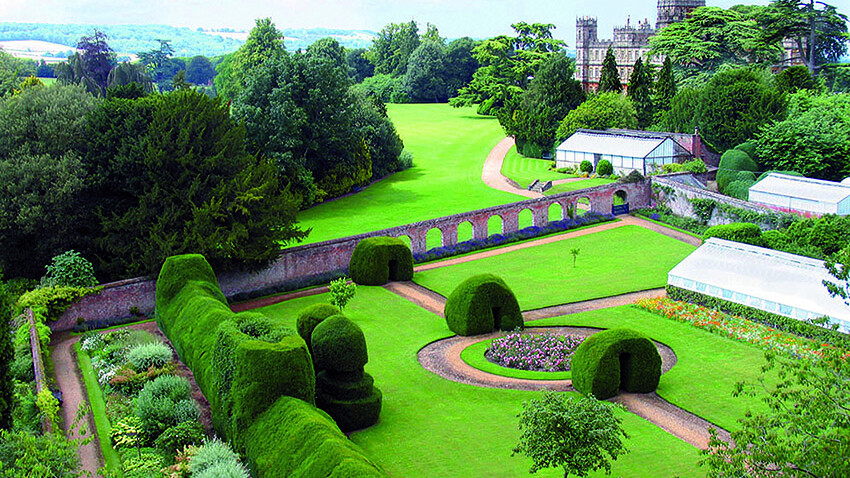

- Christmas
- Community
- Dogs & Horses
- Egypt & Tutankhamun
- Entertaining
- Farm
- Filming
- Gardens
- History & Heritage
- Daily Life
- Royalty
- Cooking
- Interiors
- Heroes
- Architecture
- Cars
- Conservation
- Downton Abbey
- Events
- Gardens & Landscape
- Highclere Castle Gin
- History
- Planes
- Restoration
- Stories & Books
- Uncategorized
- Visitors
- Wildlife
64 Comments
Dear Lady Carnarvon, thank you for another wonderful post. You have inspired me to go out and buy a tree (or maybe a few) to plant in my garden. I live on the East coast of the U.S. and am eager to see what we have available in our nurseries. Take care and Happy Spring! Lauren
Wonderful!
My husband and I spent a Sunday at Highclere recently on our return to the States. Lovely day where we enjoyed the House tour, lunch and a long walk around the grounds. There is nothing like an English Oak.
We live on almost 4 acres of forest land, here in the States. We see the cycles of renewal and departure continually as trees no longer living come down to become homes for insects and eventually, food for their neighbors. We feel blessed to be able to participate is this cycle of life. It will be fun to see how many oak starts I can find these days! Good luck with that cracked lintel beam….there is always something needing our attention, is there not?!
LOVE these posts that I read before I start my day. Inspirational on many levels. Best to you and those who help you tend the beautiful Highclere Castle estates.
Our area has lost so many trees to the emerald ash borer; it’s painful to see their skeletons among the newly spring greening trees. We’ve just moved into a lovely retirement community in the suburbs of Philadelphia, and one of the first things we’ve done is to plant two trees: a Kousa dogwood and a serviceberry. I can just imagine the impact of all that tree planting in honor of the queen.
Lady Carnarvon lovely pictures of oak did you lord Carnarvon have a lovely weekend and l lovely to visit highcelere castle and l am fan of Downton abbey film and calendars
I am so sorry you will not be open in June. We are from US and will be in Camberley from June10-15 and we’re so excited to hopefully visit you wonderful estate.
Ada B Taylor
I think CHERYL THOMPSON got the right idea. Buy the way Happy Mother, a little late. thank you for another great blog.
fondly Jenny
So please you enjoyed the gardens
For sure!
Thank you!
I get such pleasure each Monday morning when I read your so very interesting stories, always knowing the joy and delight they bring to me. My life, alone, can be lonely, but I feel so much more alive, so uplifted, so ready to make my day a special one - to do something special, even just sitting at my little fish pond pondering what the fish are thinking, and the birds, and all of nature right in front of me. Thank you for all you share with us.
Trees are essentiel to the life of the planet. The "Queen's Green Canopy" was such a good initiative.
And all this reminds me of this beautiful maple tree planted on Highclere's ground in 2017 to commemorate Canada's 150th birthday. ... How it must have grown by now.
François D
Québec, Canada
Thank you!
Here in the USA we will be planting and encouraging others to plant trees in Her Majesty 's honor.
Being an ex pat we are hoping to celebrate with you all over the pond.
We have oak trees here but not the good english oak I love and remember from growing up by Epping forest.
Thank you for another wonderful post and pictures. Every monday my morning is brighter and my home sickness rekindled but living by the sea in Florida does help a lot to heal my longing.
Many thanks again for your amazing pictures and prose. As David McCullough says you paint with words.
Thank you Diane
Dear Lady Carnarvon,
Any story about planting trees is always wonderful! Thank you for being such good stewards of your estate - including preserving the buildings. Did the beam with the crack have to be removed or was it kept in place and new beam added to reinforce? The reason I ask - if cracked beam was removed, curious as to what happens to such an old piece. How old are the outbuildings?
As always, thank you for your informative blog. A great way to start my Mondays!
The inspiration in your post is a lovely way to start the day.
Lady Carnarvon .... I have been collecting acorns, sweet chestnuts, hazel nuts, beech mast here in rural Wales for many years in the autumn, just for the fun of growing trees from them. Some of my friends have been given the small trees to turn into bonsai (I feel this is a bit cruel !) and others I have planted (secretly !) at the edge of meadows and in the woods nearby. I visit them whenever I go out for walks and some of 'my' oaks are now much taller than I am. Now I have one oak tree about 20" tall which I am planning to plant somewhere as a 'Jubilee' oak, and I hope to be able to see it thrive for a few years yet (I'm in my late 70's !) Everyone should plant trees ! And start with the basic 'pip' .... its such fun to watch them germinate and grow !
Wow, what a challenge you and Lord Carnarvon face daily dealing with the elements of construction the estate buildings were built with so many years ago. Prayers going out no other original support beams begin to crack and decay. Wonderful that you were able to get the replacement beam in and a team to replace it too especially given these challenging times! Trees are wonderful for in so many different way especially when coming to life in spring, providing homes and shade in the heat of summer, when in bloom of flowers or nuts and fruit and some in the season of fall given their change of colors. In our former acreage we had a many oaks, a few maples, many dogwoods, lilac, pear, a plum and magnolia trees. I am certain Queen Elizabeth appreciates the request of tree planting in honor of her Jubilee celebration as she is a nature and garden lover too. Best of luck going forward with the current repairs and the search for an appropriate tree to select and plant in her honor. I am guessing that will be a blog event from you with photos one future Monday.
We have a ranch in west Texas that has been in the family for 200 years. There are several mighty oaks that have been there far longer than we have. They may have sheltered the Native American Indians who camped and hunted along the creek banks. The evidence from their meal fires are still evident. One of the oaks is in the backyard and as a witness to history murmurs its secrets and its wisdom. I love to sit in the swing under the mighty limbs and gaze up into its branches, home to many animals and birds. In the fall the monarch butterflies are so thick the branches pulse with the opening and closing of their vibrant orange wings. It is one of my hearts favorite places on Earth. Every year we dig up saplings and replant them around the area. Hundreds of years from now someone will enjoy their shade and listen to and share their secrets.
Our family is from Boston USA, and when my husband died two years ago, several of one of my daughters girlfriends gave us a lovely little pink cherry tree to plant in the yard as a memorial. I am reminded of this because it is in full bloom right now and such a lovely, bright end to winter !!!
Thank you so much for your weekly emails. I so look forward to them !!!!
Ruth Gardner Lamere
Our stepmom passed away on December 19th last year, at age 89. She lived a long and purposeful life; for most of which she was a beloved elementary schoolteacher. Our plan was to plant a tree in her honor as soon as weather permitted. Thank you for the suggestion of making this a fruit tree!
Roberta
Chicago
Lovely story - thank you
Dear Lady Carnarvon,
the trees are magnificent, there is nothing like an oak tree to remind us where we are, on earth, in the universe and in the lifecycle. If only trees could talk, think how much wiser we would all be.
I hope your eye is better, did you manage to get seen in the end?
Jane Bentley
I also enjoy your Monday blog. My husband and I were fortunate to tour Highclere on Easter Sunday as we were in England taking part in the Viking pre-extension to the Pharaohs and Pyramids Cruise. We so enjoyed the tour and our guide was wonderful. The Egypt exhibit was especially interesting. Thank you so much for opening your home.
Our home is on a twenty one acre wooded lot, mainly oak trees with some other hardwoods and pines. Unfortunately, we lost about 20 trees last July due to a very strong rain and wind storm. Some were completely uprooted and others lost their tops. Again, the first weekend in January, we lost a few more due to a snow storm with a lot of sleet. We have enough fire wood for years but it is so sad to see trees come down like this. I wish we had someone local who could carve a Green Man on one of our trees that was topped by the storm as you had done. I was able to see your Green Man as we were leaving Highclere.
Looking forward to next week's blog.
I absolutely love big, old trees like the one in your first photograph. I live on the East Coast of the United States where stately trees are abundant. I always wonder what has passed before them on the land where they are planted. especially when they are in areas of historical significance such as at Tomas Jefferson's Monticello in Charlottesville, Virginia. Trees are certainly survivors.
Whoops, sorry for the typo. That would be Thomas Jefferson.
What a singularly beautiful Oak Tree--well worthy of a portrait!
This reminded me of my beloved father. A city denizen, he loved the outdoors and actively participated in Ohio conservation activities, "planting" seedling trees and fish, taking me along with him to help. I remember being barely out of pre-school, walking through woods on a Saturday morning, my little hand in his, and learning to identify the local hardwoods by leaf and name. Still so special.
Perhaps that is a reason why I married a man who planted fruit trees in every backyard of every one of our homes.
And why Arbor day is so special.
Thank you for another beautifully written and illustrated letter!
A selfless gift to future generations is to plant a tree and under the shade of it, the planter will never sit.
I love that you have planted trees in the past to be used for repairs on buildings of matching wood. My friend from England told me of her grammar school that had an oak tree planted on the grounds in case the school needed repairs. She was surprised that we across the pond just remove the old school and put up another with much less character. Supply and demand is making products scarce everywhere, but your answer of the fruit trees seems to be the perfect solution.
My eye is better thank you
I agree!
Dear Lady Carnarvon and Monday Family,
Given the subject matter of today’s blog, it seems appropriate to recite the American poet, (Alfred)Joyce Kilmer’s poem, ‘Trees’:
I think that I shall never see
A poem lovely as a tree.
A tree whose hungry mouth is prest
Against the earth’s sweet flowing breast;
A tree that looks at God all day,
And lifts her leafy arms to pray;
A tree that may in Summer wear
A nest of robins in her hair;
Upon whose bosom snow has lain;
Who intimately lives with rain.
Poems are made by fools like me,
But only God can make a tree.”
Of course, we can all assist by planting a tree.
Also, yesterday, the 8th May, marked the 77th anniversary of Victory in Europe. Yet another reason to plant a tree today, in remembrance.
Your faithfully,
Jeffery Sewell
Beautiful - thank you
The mechanic at the time to the 5th Earl was my ancestor Edward Trotman, I'm sure he would have approved of the recent repairs to his place of work.
We planted a Shumard Red Oak in our front yard in Arlington, TX in 1993. It is now magnificent beauty taller than our two-story home and turns a brilliant red/burgundy in the autumn and early winter. The shade it provides in our hot Texas summers is a Godsend!!
Lady Carnarvon,
I hope your challenges with the castle’s structures will be readily solved to maintain the strength of this beloved building. It ‘belongs’ to so many fans of yours and Geordie’s.
I live in Raleigh North Carolina (names both from the dear Mother country [Carolina from Charles]) and we are the City of Oaks.
Thankfully, efforts are being taken to save trees as a necessary part of our landscape, especially the beautiful old trees at Highclere.
Martha
Your message this week was very timely. We had to have a huge willow oak removed this past week from our back yard (really more of a courtyard) because it was much too close to the house, having grown so much over the past twenty-some years we’ve lived here, and the roots had become a serious problem. It also had become a hurricane hazard, something we are prone to here on the east coast in Norfolk, Virginia. The house is over a hundred years old and looking at the rings, we think the tree was a good bit older than that. The operation to take it down from its tight quarters in relation to our house and a neighbor’s was fairly complicated (and expensive!), requiring a crane and multiple other trucks, men and equipment. Interesting to watch but so nerve-wracking!
He tree itself appeared very solid and healthy which made me even sadder to see it come down and an army of squirrels looked totally flummoxed. There are plenty more trees in the immediate area for them and the birds, so I know they will adapt, and I supposed we shall as well in time. But I’ve really been mourning the loss of this giant oak, even more than I realized I would. I think it may have offered you a very sturdy beam—or two!
Beautiful post! My Grandfather was instrumental in Arbor Lodge, Nebraska here in the States. We as a family honor him by planting multiple trees everywhere our family has spread. Trees are life.❤️
Hope to visit soon,
Julie Anderson
Dear Lady Carnarvon, the trees, once planted, remain forever and protect our shoulders with their shadow. A bit like the people dear to us, who continue living in our hearts. " But the tree it still remains . Then here ’s to the oak, the brave old oak, Who stands in his pride alone; And still flourish he, a hale green tree, When a hundred years are gone " ( The brave old old Oak , H. F. Chorley, 1904 ). Stay safe and healthy
Thank you for reminding us!
Martha G
Dear Lady Carnarvon:
Thank you for your Monday blog.
It seems for the past several weeks some of the stories you have written center around a constant repair and replace scenario. Yet, despite the situation at hand, you make everything seem to be so effortless. You were very fortunate to have an Oak beam available to complete your garage repair project.
Tree planting is becoming a necessity here in the United States. So much of our forest growth has been damaged or lost to disease, encroachment, fires, floods, and over-development. Also, it is becoming more socially acceptable to plant a tree in honor or memory of a loved one.
Until next week, may the trees at Highclere Castle give you another story to tell.
Perpetua Crawford
Sublime!!!! All your stories I read with all my heart!!!!
They are actually my BEDTIME STORIES!!!!
Thank you soooo very much LADY CARNARVIN!!!!
!!!, for the wonderful so important job you all do to keep “DOWNTON ABBY CASTLE” well preserved!!!!
I’m planning going there early fall and SPEND as much MONEY as possible!!!!!
because it help to help you all to keep Highclaire running for generations to come!!!!
Best Regards
Lydia Flores
Chicago
It’s always a joy to read your posts, Lady Carnarvon. It was lovely to see you on the telly last night with Mary Berry as you shared both the daily “doings” of the castle and held an elegant dinner party — just as those portrayed in “Downtown Abbey”. I’m an avid Anglophile who can’t get enough of DA and will be going to see the new movie next week. And I’m excited to be coming to your “Magic of the Movies” event in September — my cup runneth over!!! All the best to you and Geordie and the staff at Highclere.
Ever your fan,
Sharon Clark
Novato, California
Lady Carnarvon,
I must not have tapped “Leave a Comment” enough this morning. I hope that your castle is finding renovation to its walls to its liking, and feeling a strength to ‘carry on!’
Mighty oaks - Huge old kings that allow little children to play among their roots, to thin young saplings bending against high winds to grow tall and strong.
I live in Cary, next door to Raleigh, the ‘City of Oaks’ in North Carolina (named for one of the King Charleses of England).
Thanks for a great morning read!
Martha
How beautiful!
Thank you
How very sad for you to loose the willow oak
I totally agree!
Thank you!
Enjoy the film!
Dear Lady Carnarvon!
I love trees. It is so important to take care of them. I really hate when People cut them down. Just think o how Long it takes before they have grown tall.
You mentioned carriages. I think of how Great it was when they were in use!
Please enjoy The beautiful month of May!
Swedish greetings from Lena
You sound like uttlerly delightful 'the Lupine Lady in that sweet book "Miss Rumphius" (by Barbera Cooney); sowing your own legacy!
Such an apropos poem, lovely! And thank you for the reminder!
Dear Lady Carnarvon,
Your blogs are timely and always inspiring. Our apricot tree has become diseased and needs to be taken down; however, this gives us the opportunity to replant and add more fruit trees. It seems many different species of trees around the world have become diseased especially the oak. You have to wonder why this is happening.
Good luck on your project.
Pam
Thank you
What a lovely article, and such a mighty oak! I'm inspired to plant a tree, though I'm not a Brit. The very first television program I saw was the coronation, so I do feel an attachment. I'm also reminded of a quote attributed to Martin Luther: when asked what he'd do if he knew the world was coming to an end, he responded, "I'd plant a tree".
New oak timber but we might make something from the old one- part entirely gone and partly ok
Dear Lady Fiona
Read and reread your lovely Blog. I have a passion for trees having planted a few in my yard and on the sides and front of my house. Each tree I consider as marker that I indeed resided on this Planet and did my small bit to preserve and protect what I can to Preserve it. I look forward to Monday and your latest Blog
Thank goodness for trees, in all their glory. I love your blogs and have to catch up on a couple. German trees have been attacked recently too with the procession caterpillar or some such thing, just to mention one. They are usually cordoned off in parks etc. It's so sad to see the trees falling in these heavy storms we're witnessing lately. My son's partner is a forester here in Germany. At the moment she's in charge of the buying and selling and the caring of trees. My son is studying forestry science which is very detailed and all encompassing. We have a small garden and I think we already have enough trees. Our neighbour's maple keeps trying to spread its seeds and I'm not kidding when I say we have to remove dozens of shoots which have taken hold each year. My tree story is that when we first moved here, I went to the garden centre and asked for a fruit tree that would be suitable for a relatively narrow patch beside the house. The fellow nodded and seemed very helpful and sold me a Riesen Kirchbaum (a giant cherry tree). I thought we would harvest giant cherries but it took seven years for the first cherries to appear and they they were in abundance. Unfortunately, the birds got them and the tree was so huge that we couldn't harvest them fast enough. Sadly, it had to go because the roots were already spreading far and wide. I know that fellow understood me and I bet he had a bit of a laugh at my expense. There's naught as queer as folk, as my grandfather used to say.
I think I would have suggested a pear tree!

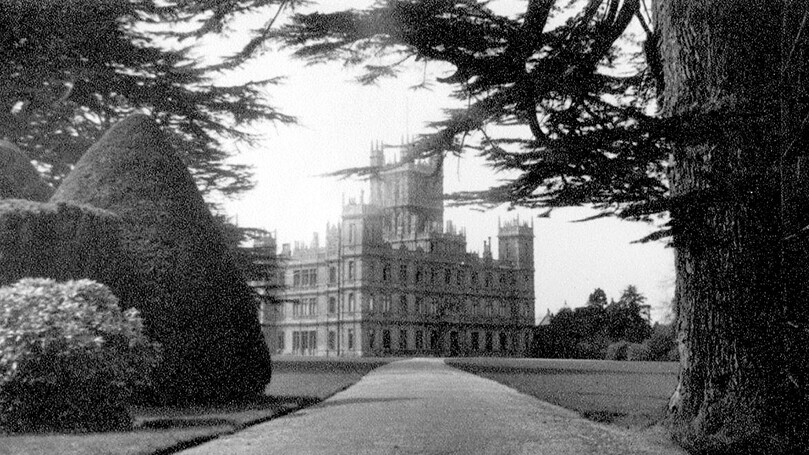
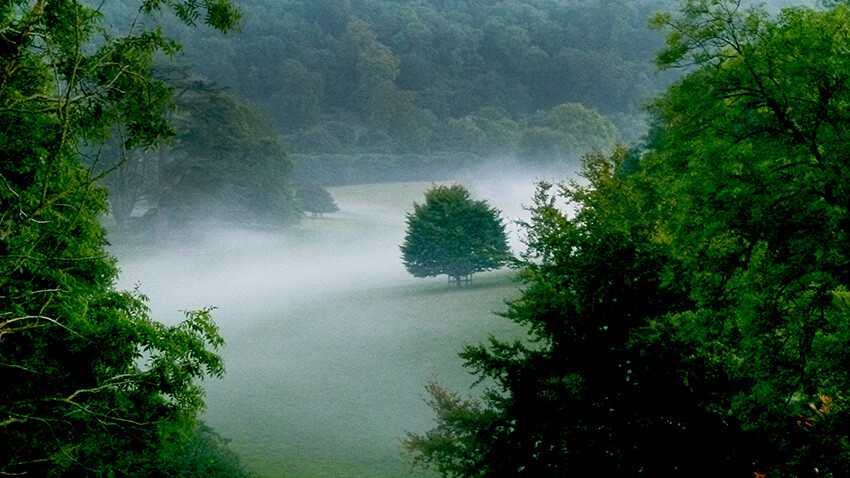
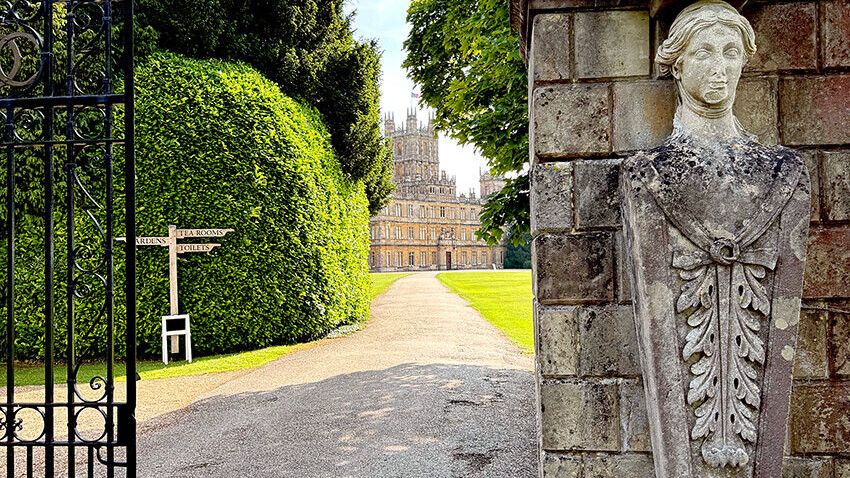
Lady Carnarvon, excellent story today as always. For me planting a tree for a special occasion, in memory of someone special or in honour of someone is such a heartwarming gesture. Something dear to my heart. Cheryl.